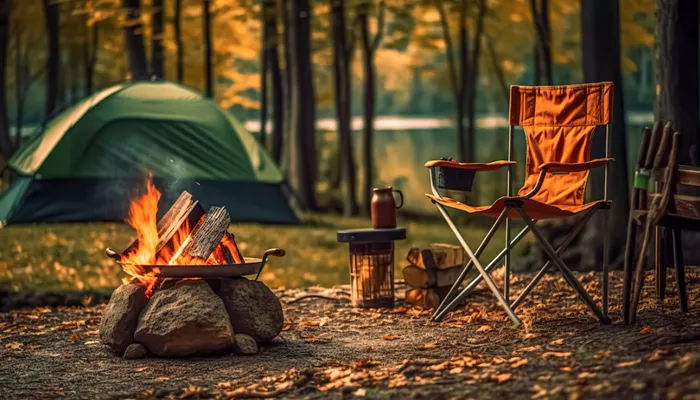Camping is a beloved outdoor activity for many people. It offers a chance to connect with nature, unwind, and enjoy time with family and friends. However, one important aspect of camping that often comes up is the cost of campground fees. This article will explore the various factors that influence these fees, the types of campgrounds available, and what you can expect to pay.
Types of Campgrounds
Before diving into fees, it’s essential to understand the types of campgrounds. They vary in amenities, locations, and costs.
1. National Parks
National parks offer stunning natural beauty and well-maintained campgrounds. However, they can be more expensive than other options.
Average Fees: $20 to $30 per night.
Amenities: Typically include picnic tables, fire rings, and restrooms. Some have showers and water access.
2. State Parks
State parks are a popular choice for campers looking for a mix of affordability and amenities.
Average Fees: $15 to $25 per night.
Amenities: Usually include picnic tables, restrooms, and sometimes electrical hookups.
3. Private Campgrounds
Private campgrounds often offer a wide range of facilities and activities. These are usually more expensive but can provide extra comfort.
Average Fees: $30 to $60 per night, depending on amenities.
Amenities: May include Wi-Fi, swimming pools, convenience stores, and organized activities.
4. Forest Service Campgrounds
Managed by the U.S. Forest Service, these campgrounds are often more rustic and can be less expensive.
Average Fees: $10 to $20 per night.
Amenities: Basic facilities, including fire rings and picnic tables. Showers and electricity may not be available.
5. Dispersed Camping
This is a free camping option found on public lands. It offers no facilities and requires you to pack in and pack out everything you need.
Average Fees: Free.
Amenities: None. You’ll need to be self-sufficient.
Factors Influencing Campground Fees
Understanding campground fees requires knowledge of the factors that affect pricing. Here are the main elements that contribute to costs:
1. Location
Campgrounds in popular tourist areas or near major attractions tend to have higher fees. For example, campgrounds near Yellowstone National Park may charge more than those in less frequented areas.
2. Season
Fees can vary by season. Campgrounds are generally more expensive during peak seasons, which often include summer and holiday weekends.
Peak Season: Higher rates, often 20-50% more.
Off-Peak Season: Lower rates, sometimes with discounts.
3. Amenities Offered
Campgrounds with additional amenities like showers, laundry facilities, and recreational activities will charge more. If a campground has a pool or playground, expect higher fees.
4. Site Type
Different sites come with different costs. For example:
Tent Sites: Generally the cheapest.
RV Sites: Usually more expensive, especially those with hookups.
Cabins or Lodges: These can be the most expensive options, ranging from $50 to over $200 per night.
5. Length of Stay
Some campgrounds offer discounts for extended stays. If you plan to camp for a week or more, inquire about weekly rates. This can save you a considerable amount.
Hidden Fees
When budgeting for campground fees, it’s crucial to consider hidden costs that may arise:
1. Reservation Fees
Many campgrounds charge a reservation fee, which can range from $5 to $10. This fee is typically non-refundable.
2. Extra Vehicle Fees
If you’re bringing multiple vehicles, some campgrounds charge additional fees for extra cars, typically around $5 to $10 per night.
3. Pet Fees
Bringing your pet? Some campgrounds charge a fee for pets, usually between $1 to $5 per night. Others may have weight restrictions or limit the number of pets.
4. Day Use Fees
If you plan to visit a campground for the day, rather than camping overnight, you may still face fees. Day-use fees can vary from $5 to $20.
How to Save on Campground Fees
Camping doesn’t have to break the bank. Here are some tips for saving money on campground fees:
1. Camp During Off-Peak Seasons
Consider camping during shoulder seasons (late spring or early fall). Fees are often lower, and campgrounds are less crowded.
2. Look for Discounts
Many campgrounds offer discounts for seniors, military personnel, or members of organizations like the Good Sam Club. Always ask about available discounts.
3. Use a Camping Pass
Some states offer camping passes that allow access to multiple campgrounds for a flat fee. Research if this is an option in your area.
4. Choose Free or Low-Cost Options
Consider dispersed camping or free campgrounds if you’re willing to forego amenities. This can provide a unique experience at no cost.
5. Book Early
Reserve your spot well in advance, especially for popular campgrounds. This can ensure you get a good rate and a prime location.
Budgeting for Campground Fees
When planning a camping trip, budgeting is essential. Here’s a simple breakdown to help you estimate costs:
1. Base Fees
Start with the average campground fee for your chosen location and type.
2. Additional Costs
Add in reservation fees, vehicle fees, and pet fees if applicable.
3. Food and Supplies
Don’t forget to budget for food, fuel, and camping gear. This can add up quickly, especially for families.
4. Activities
Consider any additional activities you may want to participate in, like fishing permits or guided tours.
Conclusion
Campground fees can vary significantly based on location, amenities, and season. Understanding the different types of campgrounds and the factors that influence fees can help you plan your camping budget effectively. By exploring ways to save and budgeting appropriately, you can enjoy a memorable camping experience without overspending.
Camping is an excellent way to connect with nature and enjoy outdoor activities. With a little planning and research, you can find the perfect campground that fits your budget and needs. Happy camping!
Related topics:
- Best Dehydrated Meals for Camping
- How Much Does a Camp Stove Cost?
- What Do We Need for a Camping Trip?

